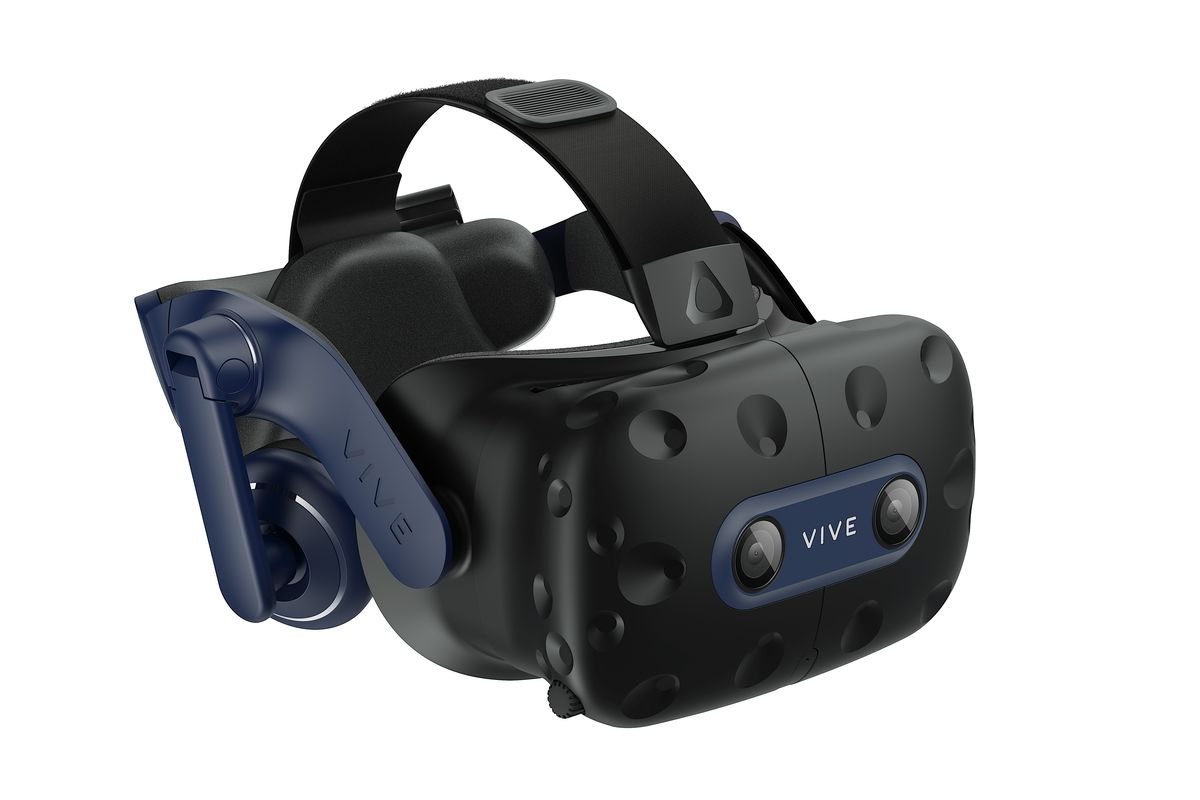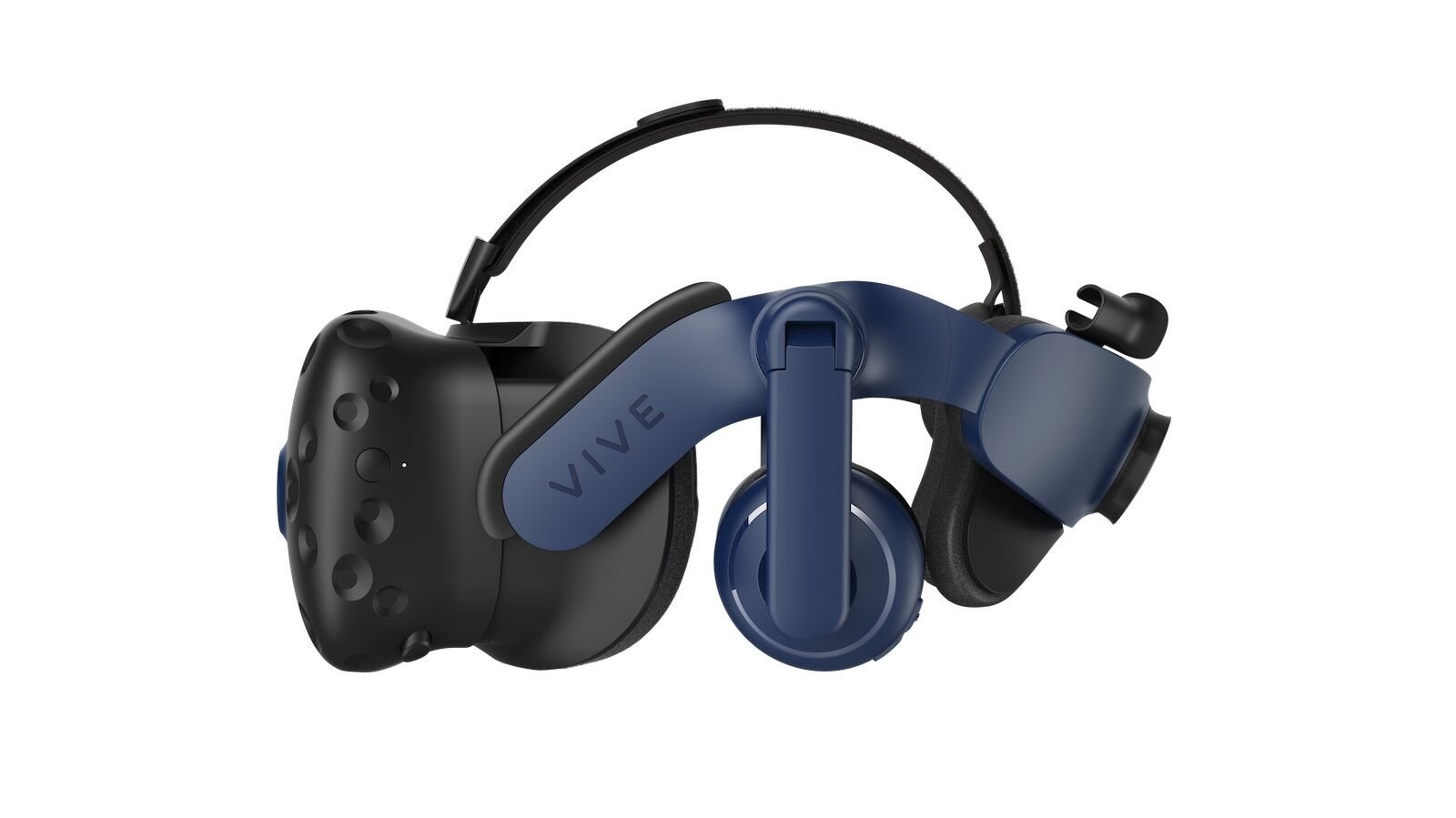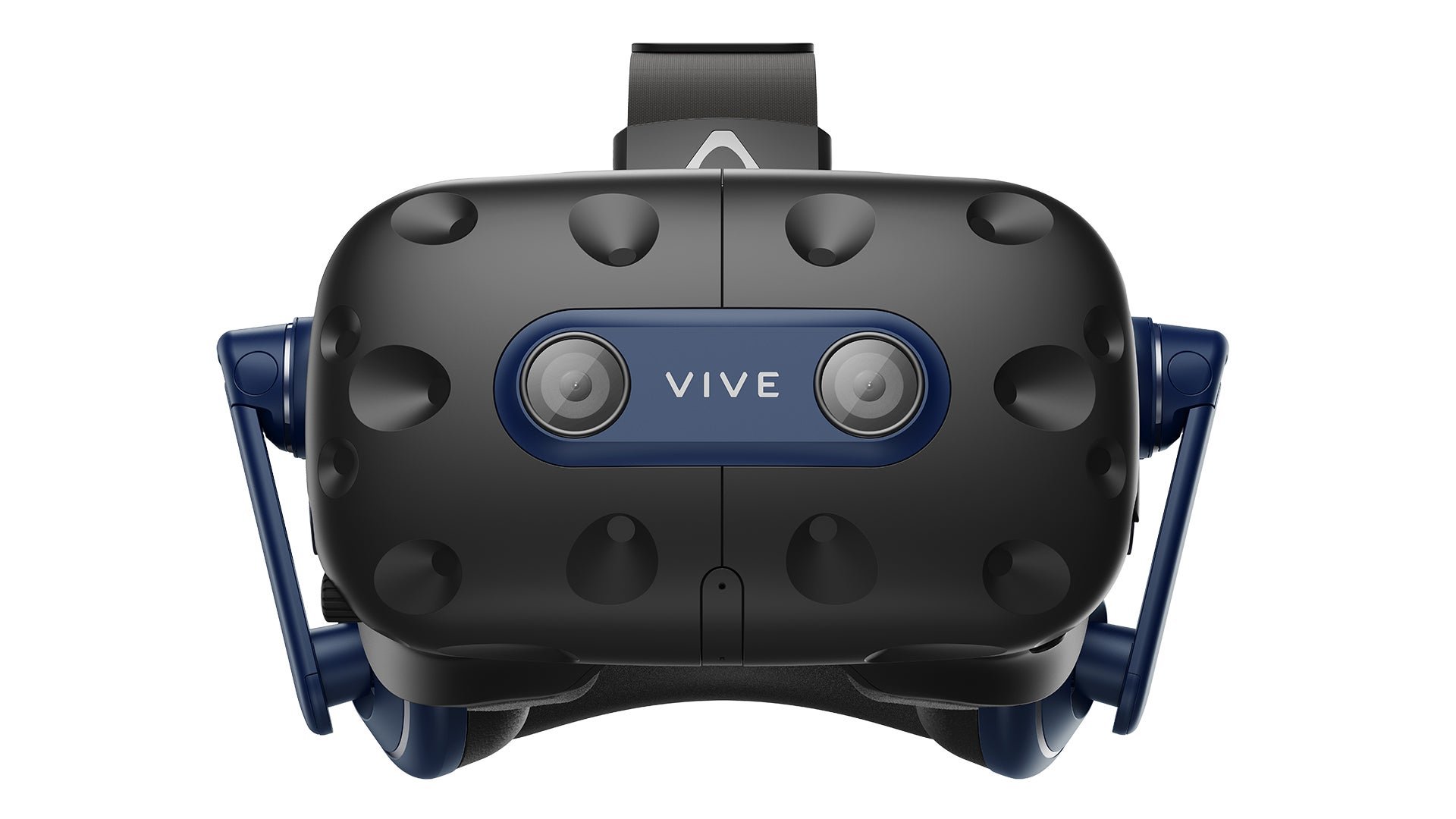The Vive Pro 2, HTC's follow-up to its commercial-level HMD, is aimed at both professionals and high-end gamers.
The Vive Pro 2 is being marketed as a premium VR solution for gamers, as opposed to the original Vive Pro, which was primarily aimed at industrial and commercial users. I can't say I blame them for doing so. The Vive Cosmos, which replaced the original consumer-oriented Vive, improved the visuals but fell short on several other fronts.
You won't be able to buy the new Vive Pro 2 at your local electronics store. The only way for consumers to get a Vive Pro 2 is through the Vive website. Even so, in the ANZ region, it's only available as a headset — no retail package includes the necessary IR base stations or controllers. They're sold separately, but I imagine HTC intends for the Pro 2 to be an upgrade for those who already have the accessories.

The Pro 2 looks almost identical to its predecessor right out of the box. It's a large headset, roughly the same weight as the original Vive but lighter than the Vive Cosmos (with the Tracking Faceplate).
When I first picked it up, the first thing I noticed was how solid it felt. In comparison, the original Vive and Cosmos feel like they're made of eggshells. While I doubt it will bounce, the Vive Pro 2 appears to be built to take a beating.
Two pass-through cameras and a full array of sensors are located on the front of the headset (as opposed to the reduced amount on the Cosmos Tracking Faceplate). An on/off button and a button for adjusting the distance between the lenses and your eyes are located on the left side of the headset. People who wear large glasses will find this useful (although I could still wear glasses and have the lenses right up close without rubbing against them). The IPD (interpupillary distance), or distance between your eyes, can be adjusted with a dial on the right side. When you turn this dial, a cross appears, which aids in finding the sweet spot when you put it on.
The volume controls are on the left side of the integrated audio headset, while the mic mute button is on the right. The audio components can be removed and replaced with a third-party audio headset. A couple of plastic discs are included to keep things tidy by covering the headphone connectors if they are removed.
The Vive Pro uses SteamVR infrared Lighthouse base stations for extremely precise tracking, unlike the base Vive Cosmos, Oculus Rift S, and a slew of Windows Mixed Reality VR headsets. These aren't cheap, and they require a higher level of technical expertise to set up and operate. We already had the base stations mounted to the office walls and a pair of Vive controllers as original Vive/Cosmos owners. While a pain to set up at first, the extra effort pays off because the base stations track the headset and controller with far greater fidelity than any other method.

Putting on the Pro 2 took some time, as it does with most VR HMDs, to find the sweet spot — the point at which your eyes must be positioned over the lenses to see the display clearly. It appeared to be smaller than the original Vive's, but comparable to the Cosmos'. I was good to go after a little careful adjusting.
In comparison to what I was used to with the Vive Cosmos, the Pro 2's stated 120-degree wide field-of-view was fantastic. On paper, the Cosmos has a 110-degree field of view, but in practice, it's closer to 90 degrees. The Pro 2 provided me with a breathtakingly wide vista when I held the lenses as close to my eyes as possible.
Using the ROV Test FOV & Resolution SteamVR environment to check the horizontal and vertical FOV, it appears that the horizontal FOV is closer to 110 degrees horizontal and 80 degrees vertical. In any case, in normal use, both the horizontal and vertical FOVs are sufficient. The horizontal line of sight for a normal human is 124 degrees, and the vertical optimum eye rotation is 55 degrees (which explains why I had to strain to see the Pro 2's 80 degrees).
The Vive Pro 2 uses Fresnel lenses, as do all of HTC's HMDs, to keep the lens thickness low. Without the use of thick lenses, tiny concentric rings (raised on the inside of the lens) increase refraction. I'm not a big fan of it. The disadvantage of this technology is that bright objects can cause glare. When the HMD is properly fitted, the effect is reduced, and you eventually grow accustomed to it.
It may sound strange, but I believe the lenses are too far apart. As the binocular effect is disrupted, you may notice a circular shadow in the middle of your view if your eyes become tired or if the lenses are positioned too far away from your eyes. This happened to me a few times.

The default settings for the Vive Console software are an automatic resolution and display frequency, which may not be ideal. The Vive Console does have the option of manually applying one of five settings: Performance (2448x1224 @120 Hz), Balanced (3264x1632 @90 Hz), High (3672x1836 @90 Hz), Ultra (4896x2448 @90 Hz), and Extreme (4896x2448 @120 Hz) are the four different types of performance. I'm not sure why there isn't a 3672x1836 @120 Hz option.
The Vive Pro 2 has a pair of 2448 2448 low persistence LCD panels, so these resolutions are the combined resolution of both eyes.
I couldn't get a resolution higher than 3672x1836 at first. Display Stream Compression is required for the 4896x2448 resolution (DSC). This is a visually lossless compression built into the DisplayPort 1.4 standard that allows for the large amounts of data required for 5K resolutions to be transferred. This means you'll need not only a powerful GPU to access the Ultra and Extreme settings, but also one that supports DSC. The Vive Pro 2 is, of course, backwards compatible with DisplayPort 1.2, allowing it to work with older equipment at lower resolutions.
After some back-and-forth with the Vive engineers in Taiwan, I discovered that I needed to unplug one of my three monitors (which was overloading the GPU driver) in order to achieve the Pro 2's top performance settings. With the Pro 2 running at 4K 3672x1836 resolution, I was already impressed. My mind was blown when I turned on 5K (4896x2448).
TheBlu was the first thing I tried on the Vive Pro 2. The first thing I tried on the original Vive was this immersive underwater VR experience. I was standing on a reef 20 meters beneath the sea's surface, watching as realistic-looking fish darted around me. It was just as incredible as the first time I saw them, but without the pixelated screen door effect this time.
With modern graphics cards favoring higher resolutions, the Pro 2's higher fidelity image at the Extreme setting didn't result in the performance hit I expected. In most VR applications, the crisp visuals were complemented by a framerate that didn't skip a beat.
Because of the higher pixel density, gauges and readouts in Microsoft Flight Simulator were clearer, with virtually no performance loss when using the game's default VR settings. The scenery and airports looked well-defined and photoreal as I looked out the window of my plane over California.
Not only were the gauges in Digital Combat Simulator (DCS) easy to read, but I couldn't make myself sick doing spins and loops because the framerate was rock solid. It was incredible to fly over Las Vegas in a UH-1 chopper.
It's not all about the games. While HTC recognizes that the technology is sought after by the high-end gaming community, the Vive Pro 2 is designed as a commercial/industrial VR solution, according to the company.
Because of the higher resolution and wider field of view, watching movies on the free Bigscreen app feels like you're sitting in a cinema. Previously, I've found that watching movies in VR, particularly 3D movies, has been a skewed experience with washed-out details. All of that changes with the Pro 2. I was able to present in a hosted room using the desktop, which was crisp and readable in VR for a potential audience, thanks to Bigscreen.
The Pro 2 also comes with detachable earphones that reproduce audio reasonably well. However, it didn't seem as loud as previous Vive HMDs. I used to be nearly deafened by the Deluxe Audio Strap for the original Vive. When there was no other sound, the provided review unit had a quiet AC hum. It wasn't a deal-breaker for me, but I could hear it. The dual microphones are adequate for chatting, but I wouldn't use them to broadcast or record professional audio.
The Vive Pro 2 will be an over-the-top extravagance for most users. It's quite pricey at AU$1299/NZ$1449 for just the headset. If you already own an original Vive or Vive Pro, as well as the base stations and controllers, the Vive Pro 2 is a good upgrade.
Owners of the Vive Pro 2 can keep their existing Base Station 1.0 and Vive controllers or upgrade to the updated Base Station 2.0s, which can be purchased separately. You can even use Valve's Index Knuckles controllers for fully immersive per-finger tracking if you can find them.
HTC's Vive Pro 2 is the step up from the Vive Cosmos that I had hoped for. It isn't cheap, but it should appeal to gamers who want the best VR experience possible. The unit is durable and uses a VR system that is widely used in the industry. I see the Pro 2 becoming standard not only in VR arcades, but also in a wide range of commercial and industrial VR applications.

You should also check out the following articles:
- What is the metaverse? and how does it work?
- A meta market opportunity: The metaverse could soon be worth $1 trillion
- Facebook wants to build a metaverse. Microsoft is creating something even more ambitious.
- How to succeed in the virtual reality world of tomorrow?
- Books you must read about virtual reality
- Best New Augmented Reality Books To Read In 2021
- US$ 4.7 Billion- The global augmented reality gaming market
- The smart glasses revolution is about to get real
- Consumer Brands Reinventing Marketing in the Metaverse
- Imagine Making Money in Rec Room
Subscribe now to our YouTube channel
Subscribe now to our Facebook Page
Subscribe now to our twitter page
Subscribe now to our Instagram
Subscribe To my personal page on linkedin
Subscribe To my personal page on tiktok page for those who love to dance :)


